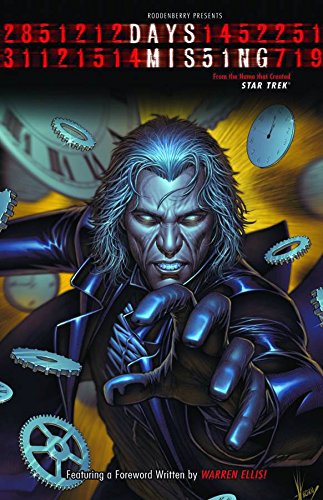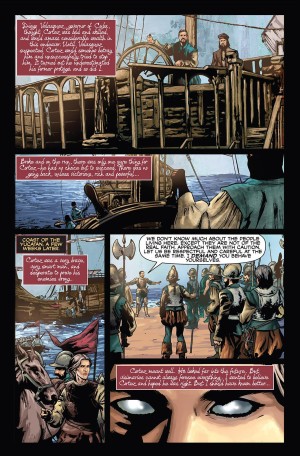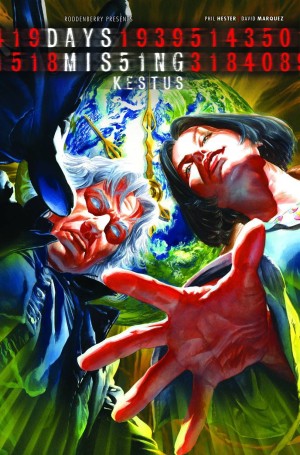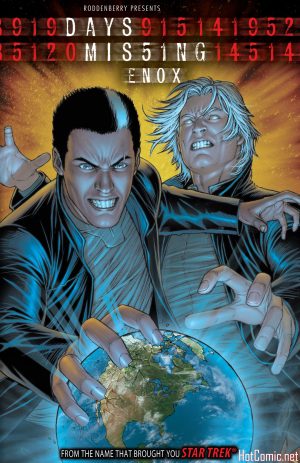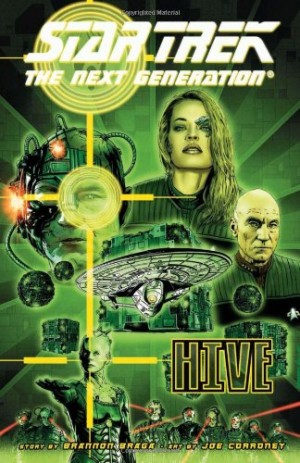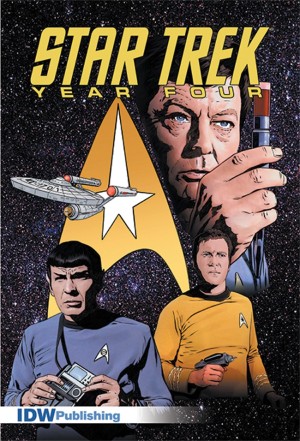Review by Ian Keogh
Buy this graphic novel because it’s an imaginative selection of science fiction stories addressing the human condition, but don’t be deceived by promotion or the front cover using the name ‘Roddenberry’, noting the man who created Star Trek. This is a product of the production company he formed, still bearing his name. Days Missing is actually the creation of Trevor Roth, a Roddenberry Productions employee, and his concept is solid.
A man known as the Steward has existed since the dawn of the planet, able to step between the known world and the infinite and wind back time. He only does so in the direst of circumstances (although these become increasingly elastic as the series continues), in effect stealing 24 hours. The counterbalance is that during the original day he must have affected or persuaded someone well enough to ensure a solution to a problem occurs during the replacement 24 hours.
The creative team of Phil Hester and Frazer Irving introduce the idea, setting their tale during an outbreak of an extremely virulent disease with fatal consequences in Swaziland in 2004. This is followed by David Hine and Chris Burnham weaving in the creation of a globally known modern myth in 1815, Matz and Hugo Petrus (sample art) looking at Hernan Cortez’s conquest of the Aztecs in 1519, and Ian Edginton and Lee Moder visiting Switzerland’s Hadron Collidor in 2008. This cleverly touches on the previous stories, and includes the Steward having to reveal who he is and his overall purpose. Of course with the day wiped, only the residual memory remains.
The final story content, also by Hester and Irving, indicates a bigger picture, We’ve seen the Steward go about his business and we’re now introduced to someone watching him, providing their own narrative in an equally distinctive font.
The writing impresses more than the art, with much of the latter being very flat, static and posed. The Steward’s distinctive eyes lacking pupils maintains a visual continuity over the different styles, and provides a disturbing effect.
Archaia do us proud with the back-up features, which go well beyond the covers gracing the original comics, although they’re also included. We have mini interviews with all writers giving the background to their material and creative process, and plenty of sketches, with the original character design being the work of Dale Keown.
With its ambitious remit across time, Days Missing very much has the feel of a project originally intended for television, but which never progressed to the screens. It has the scope and possibilities of the fondly recalled Twilight Zone, yet takes an abrupt change in direction for the second volume, Kestus, and the series concludes with a third.
